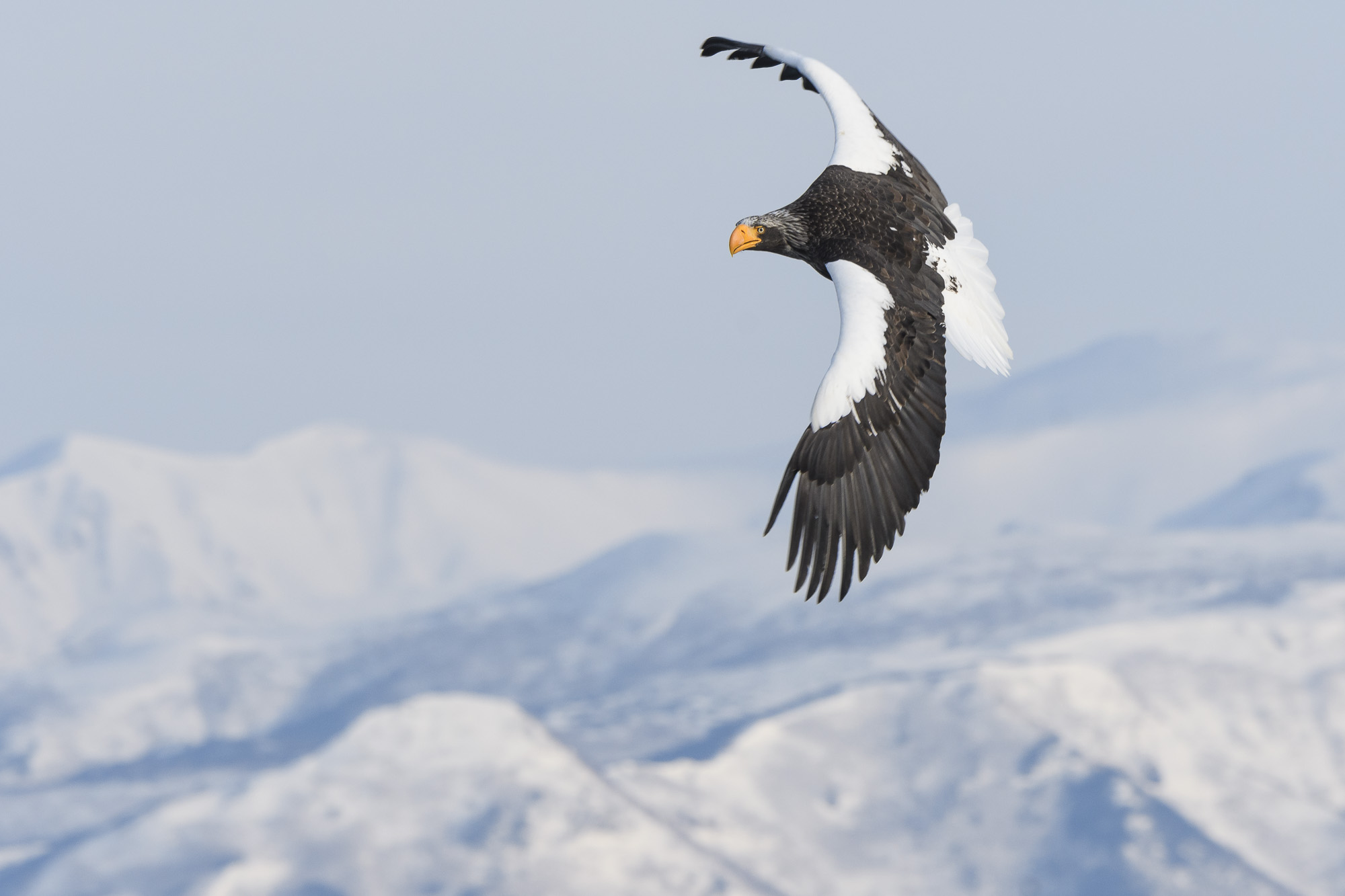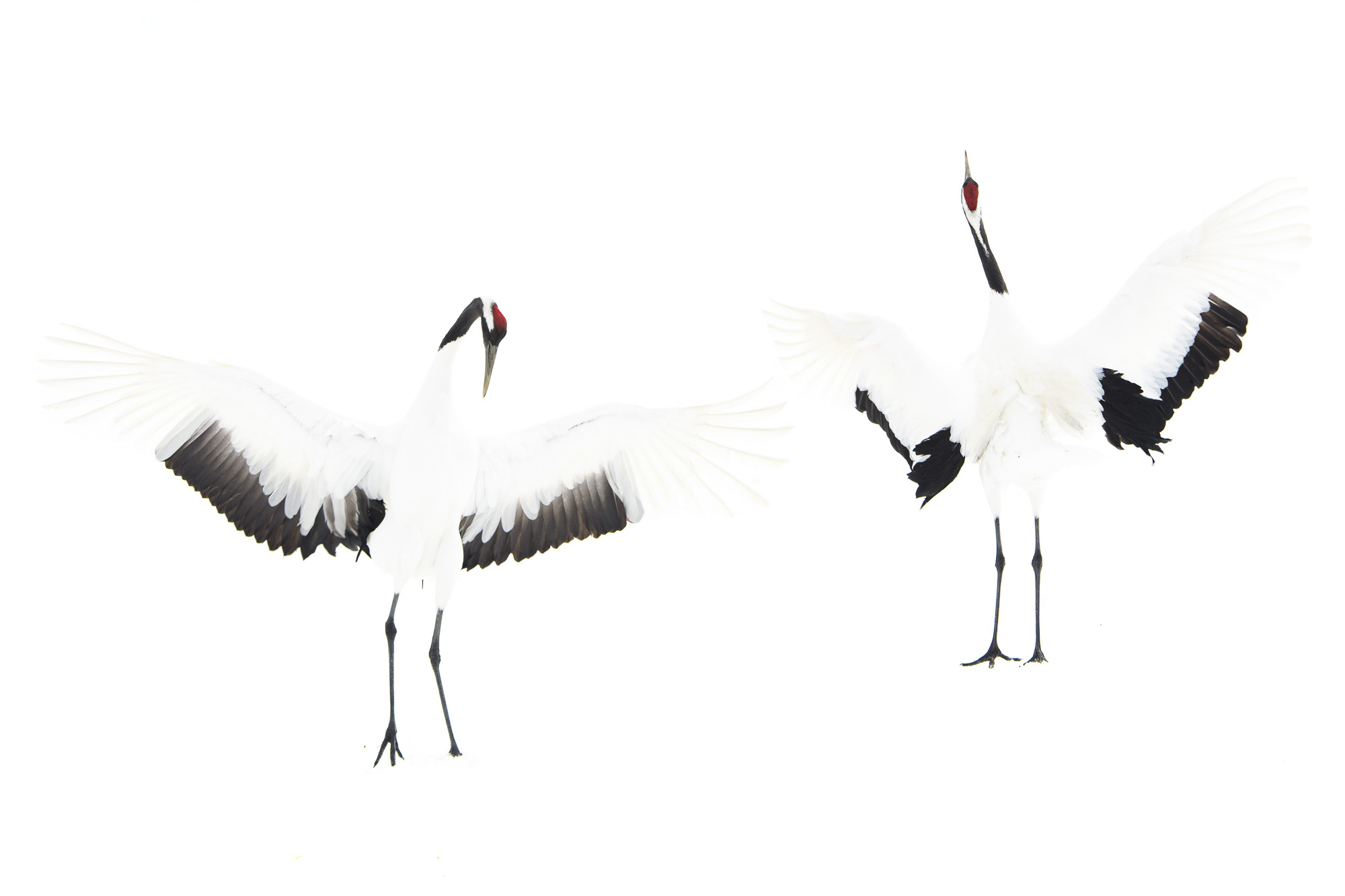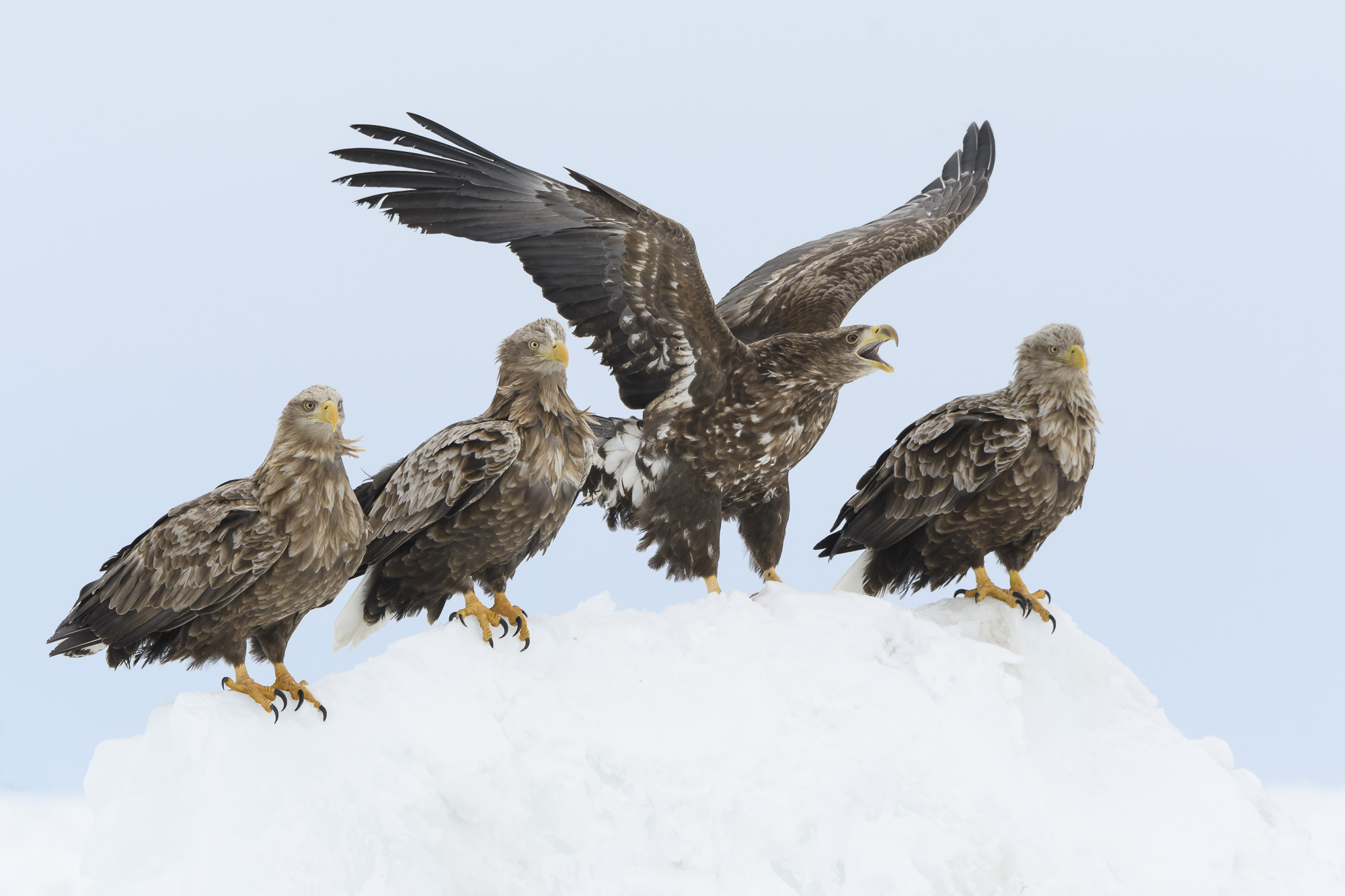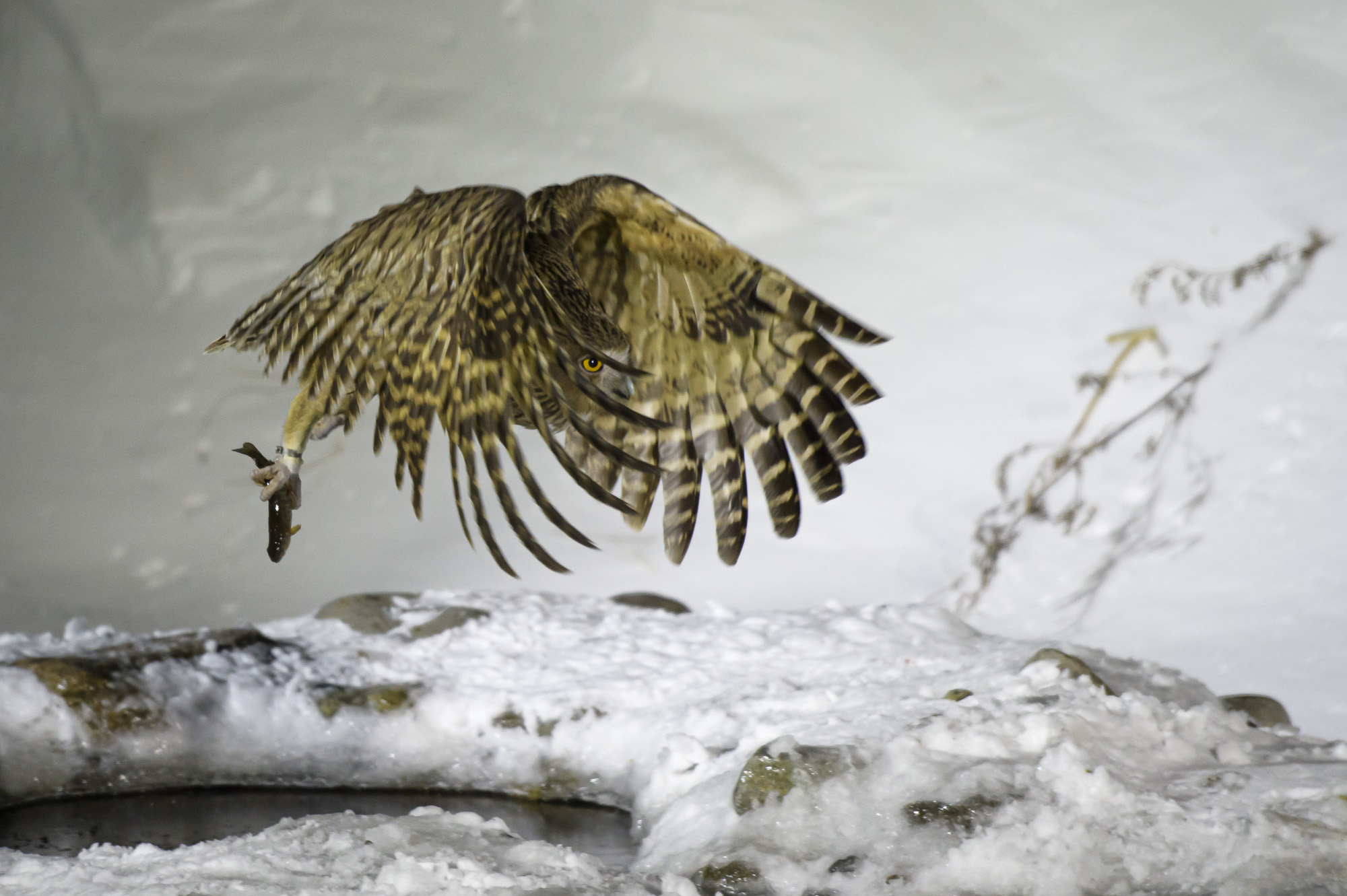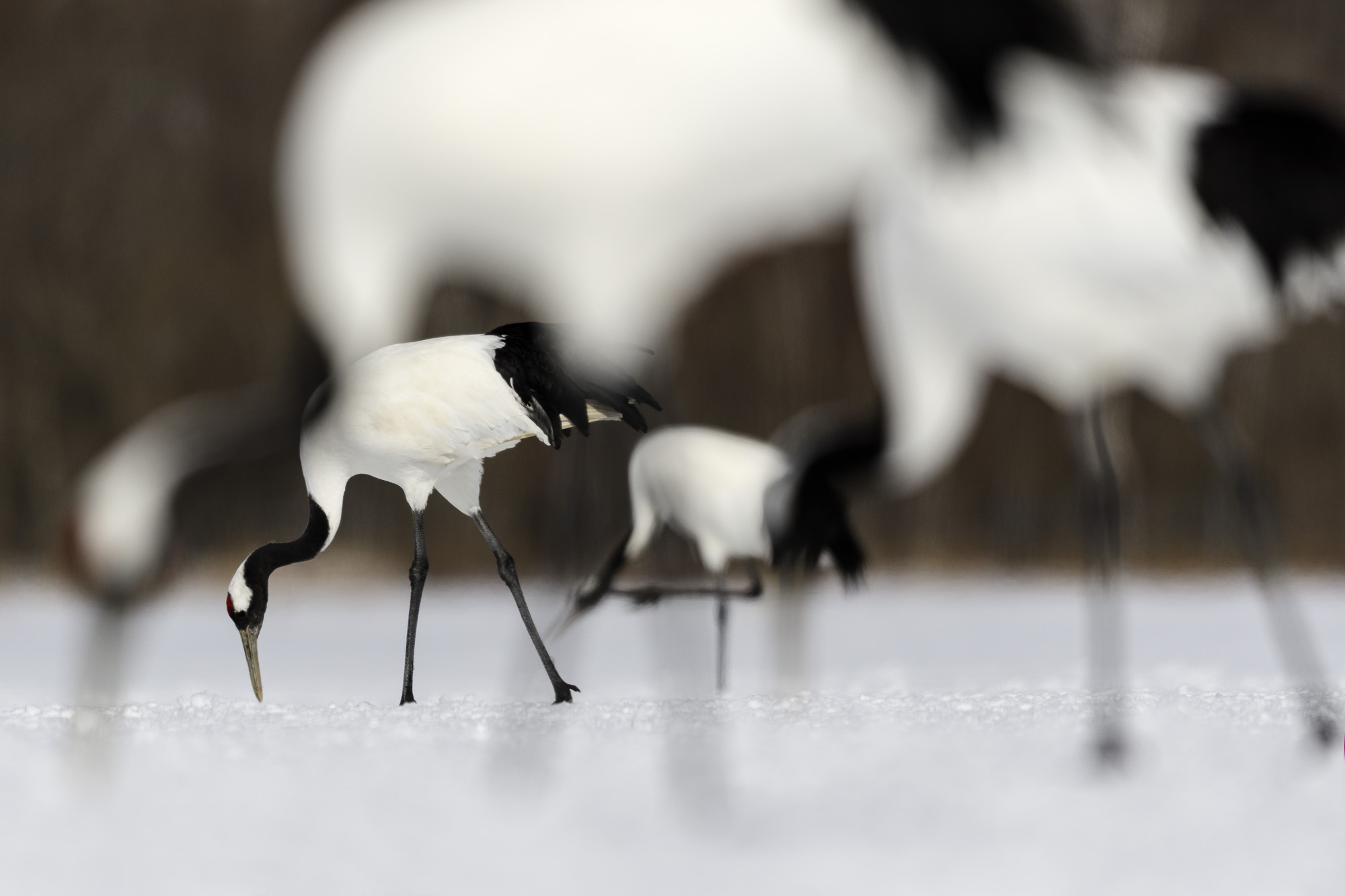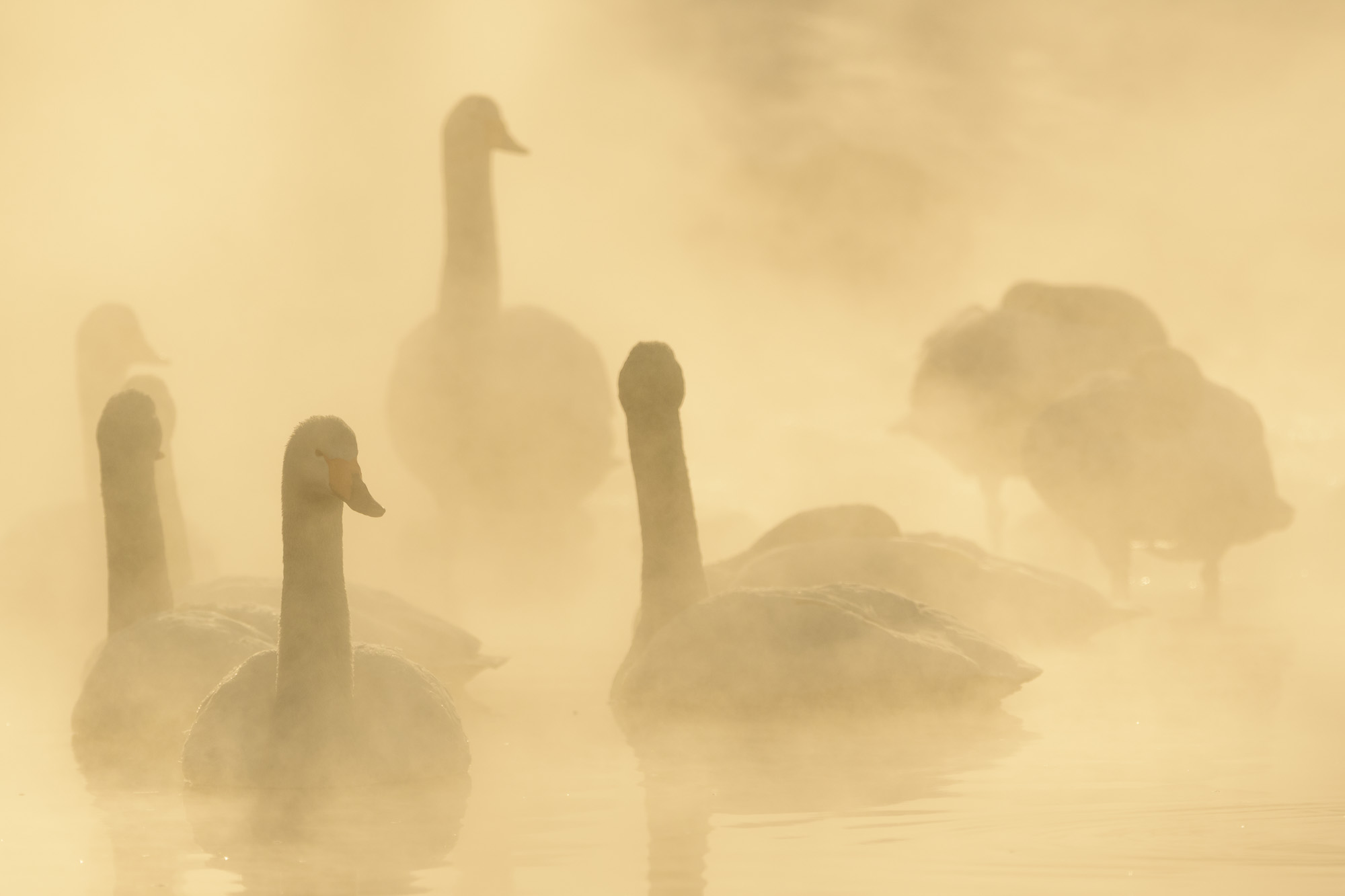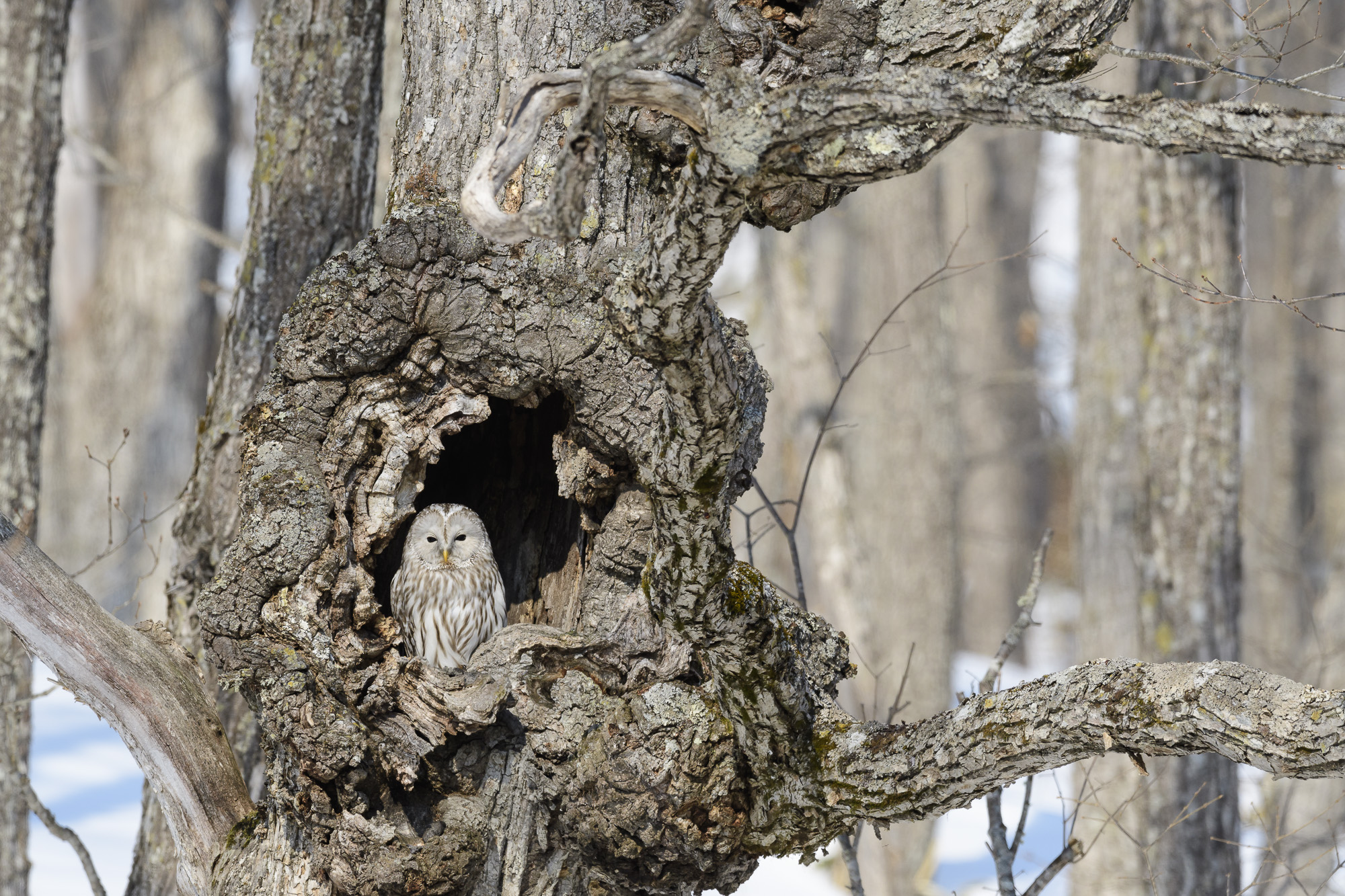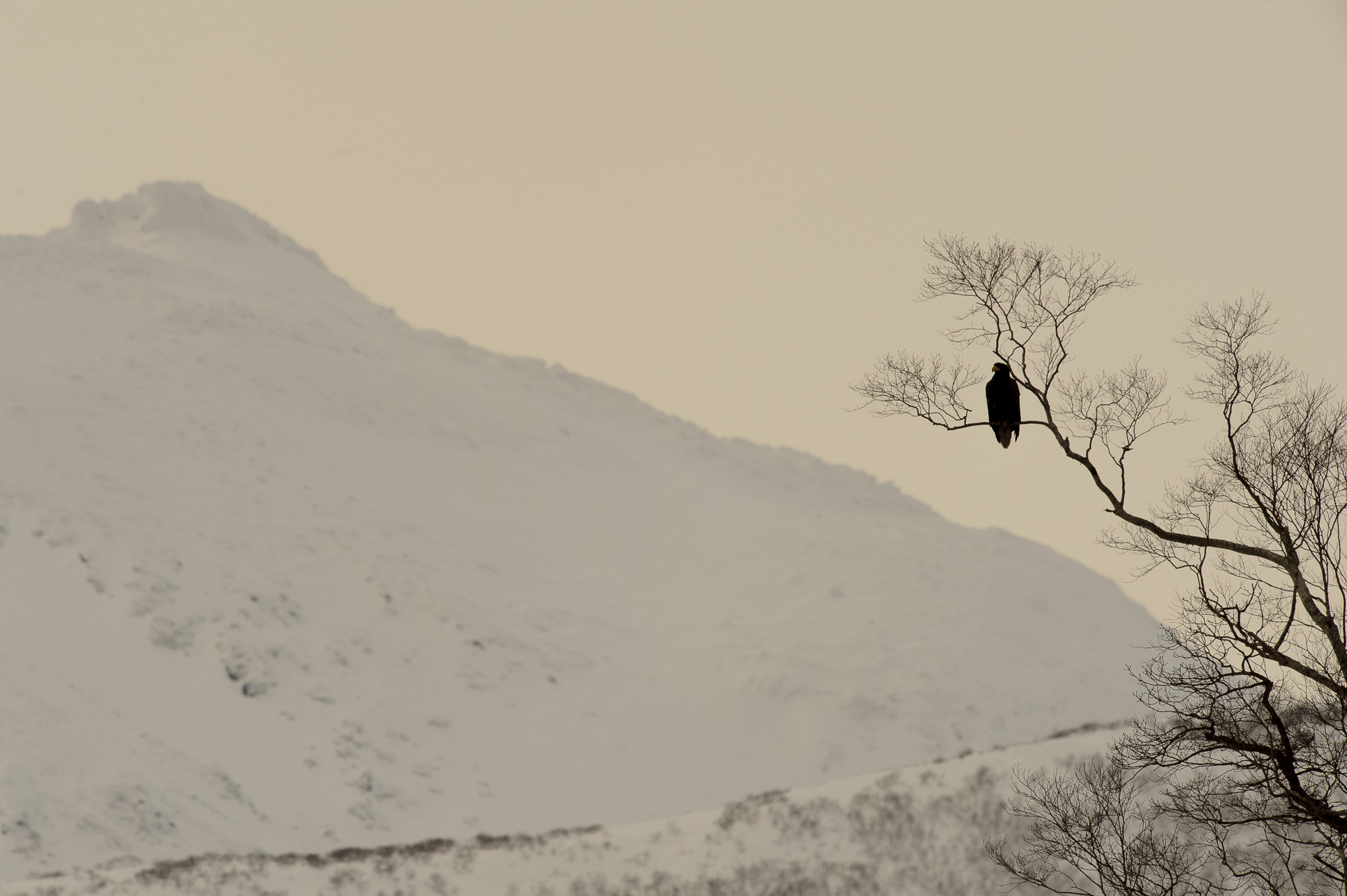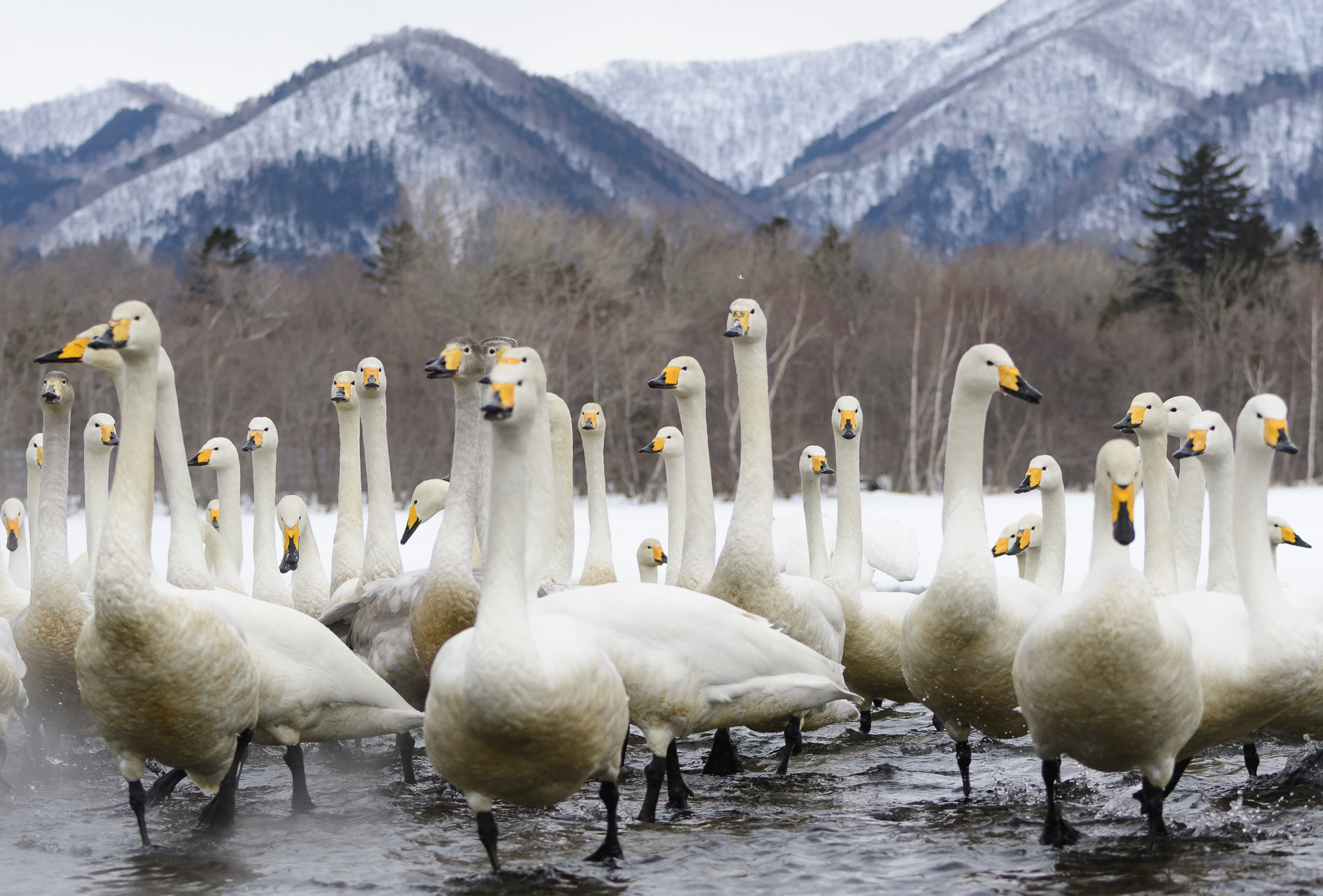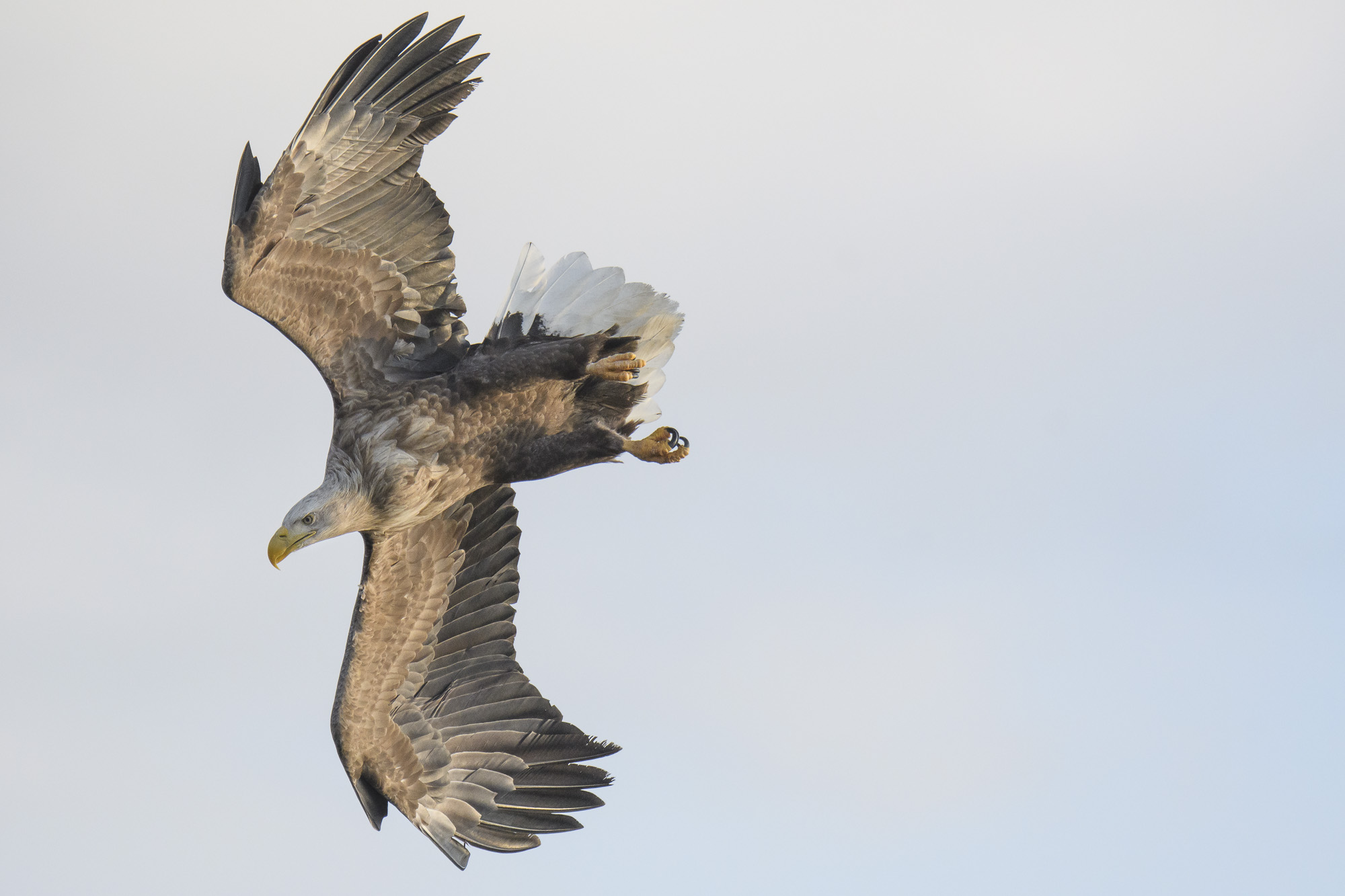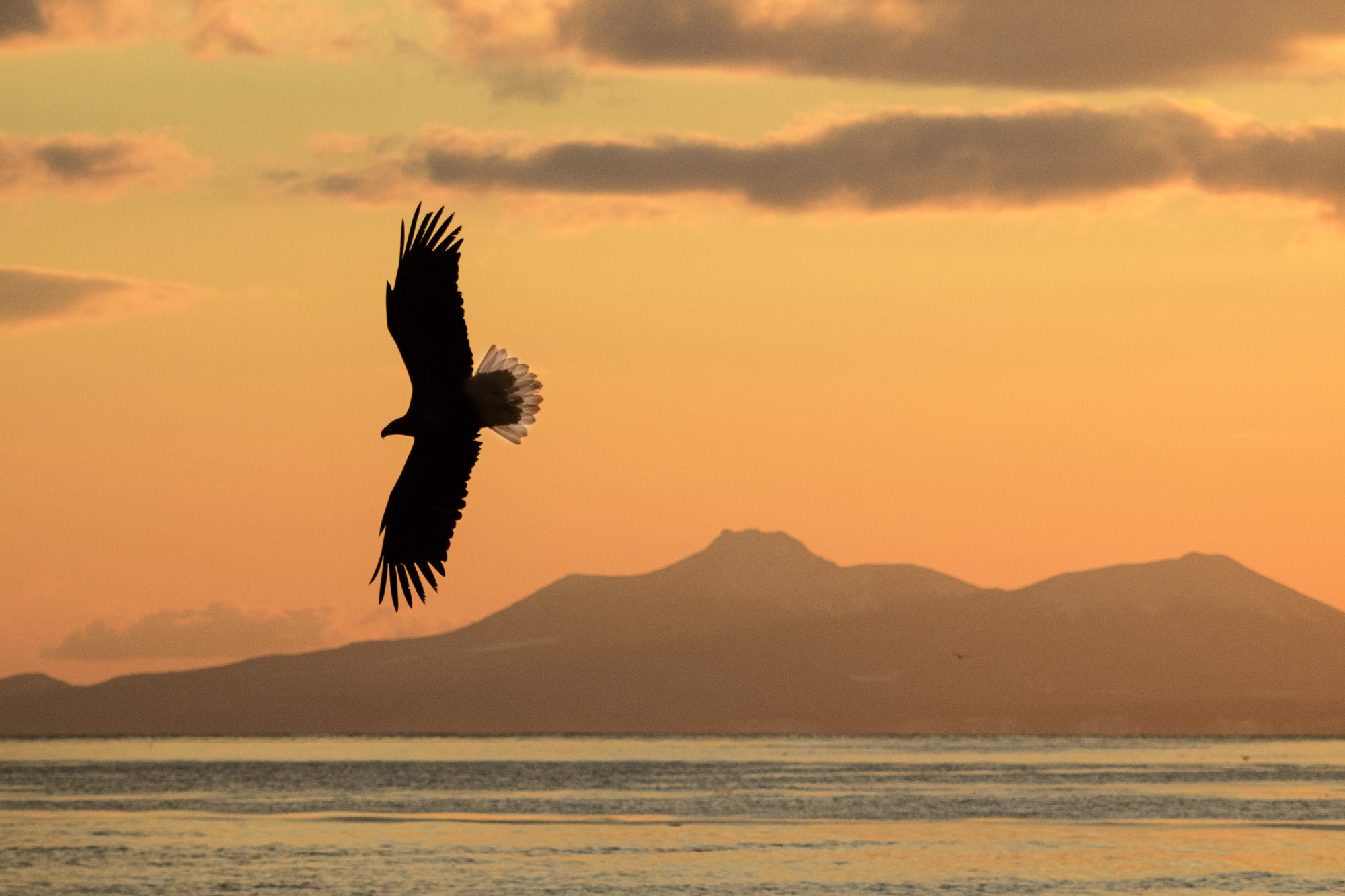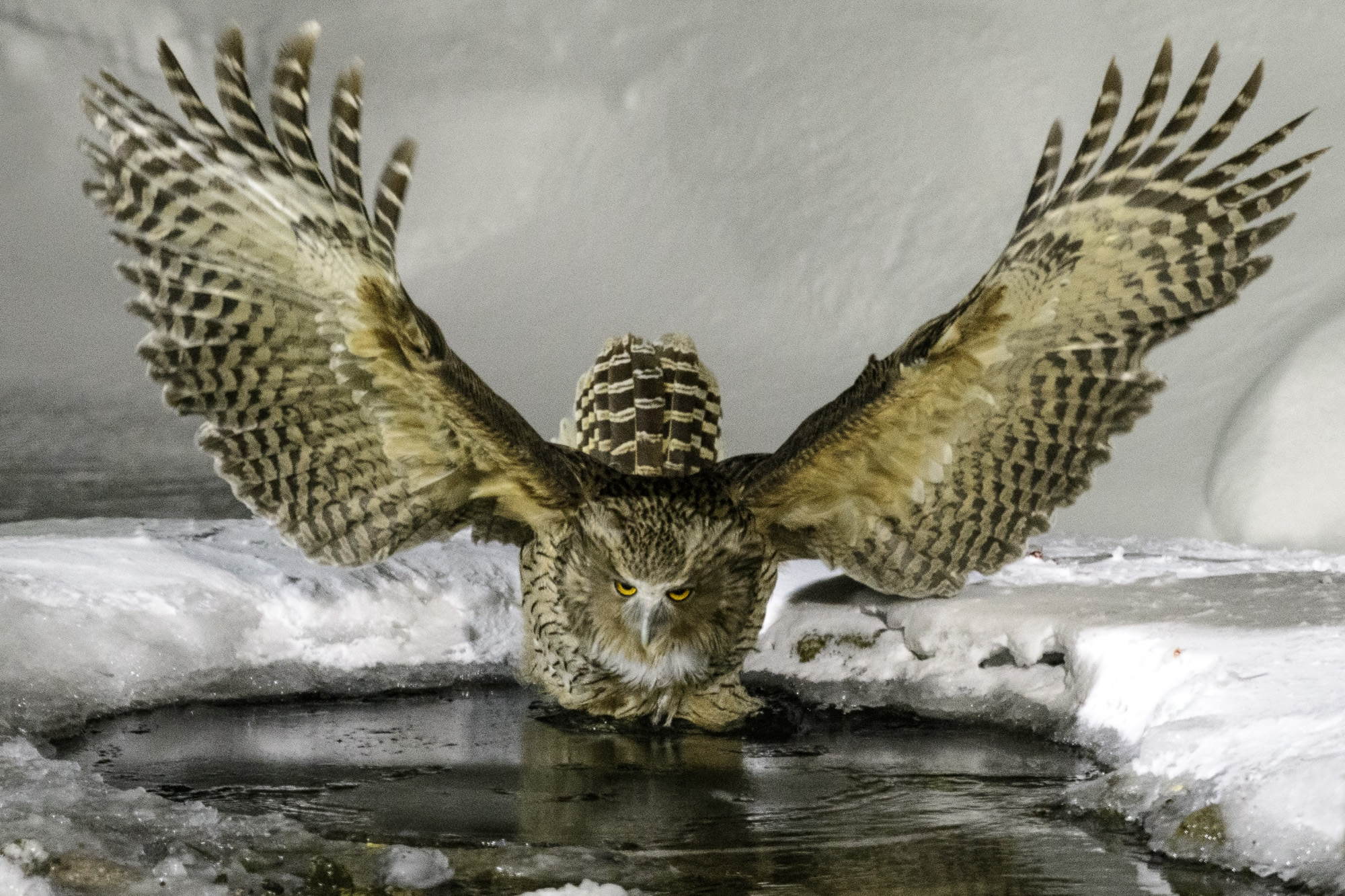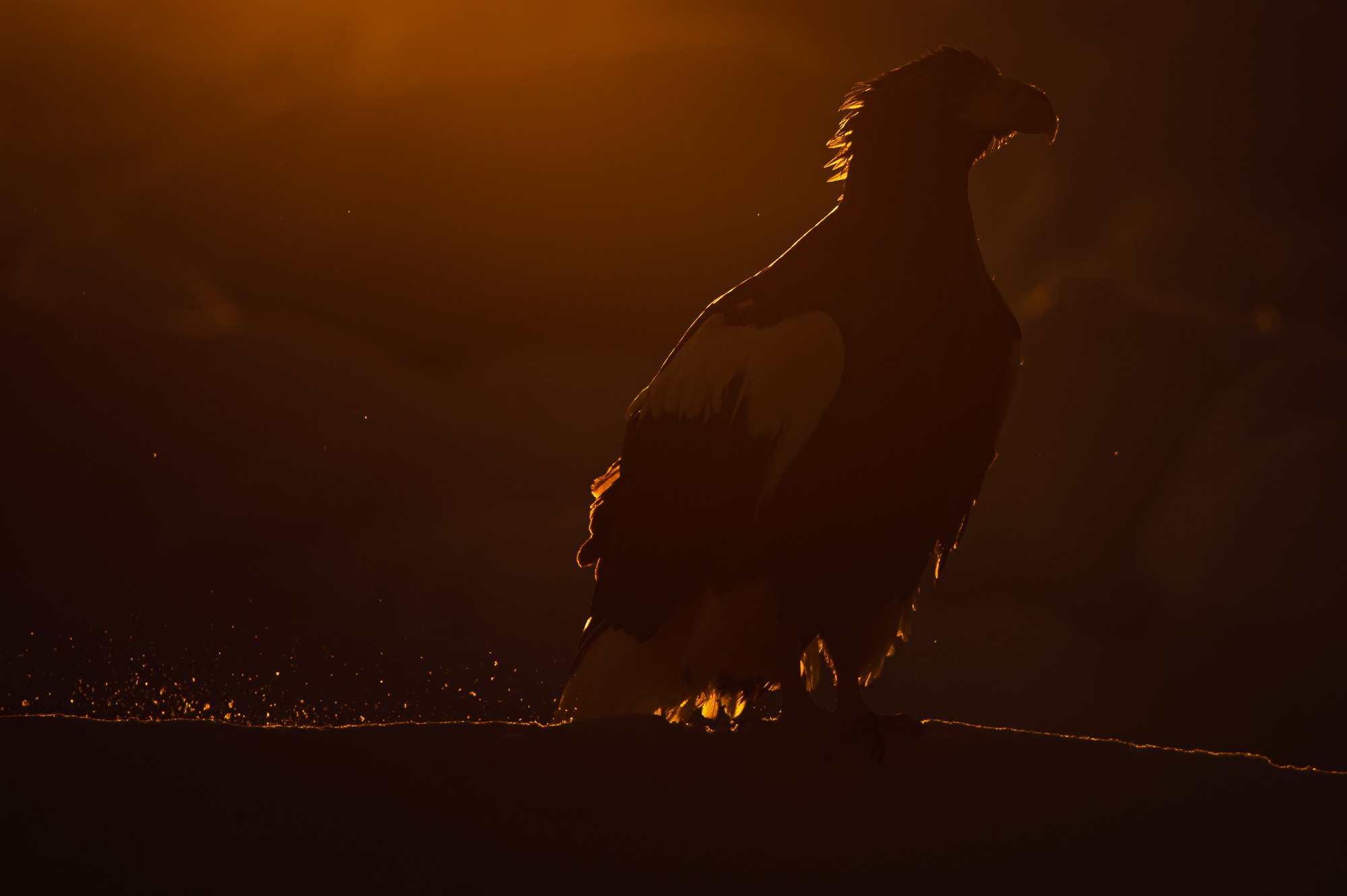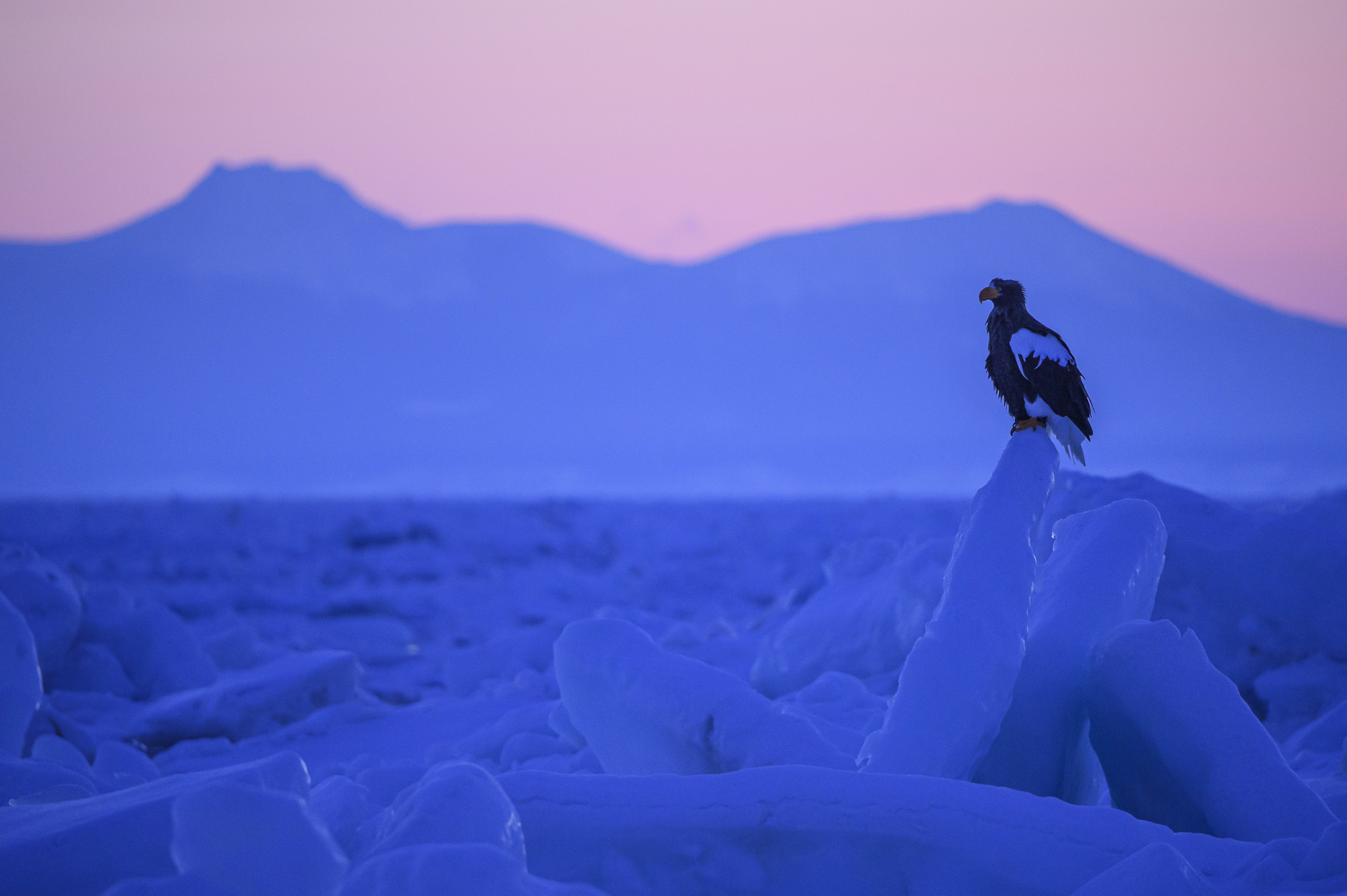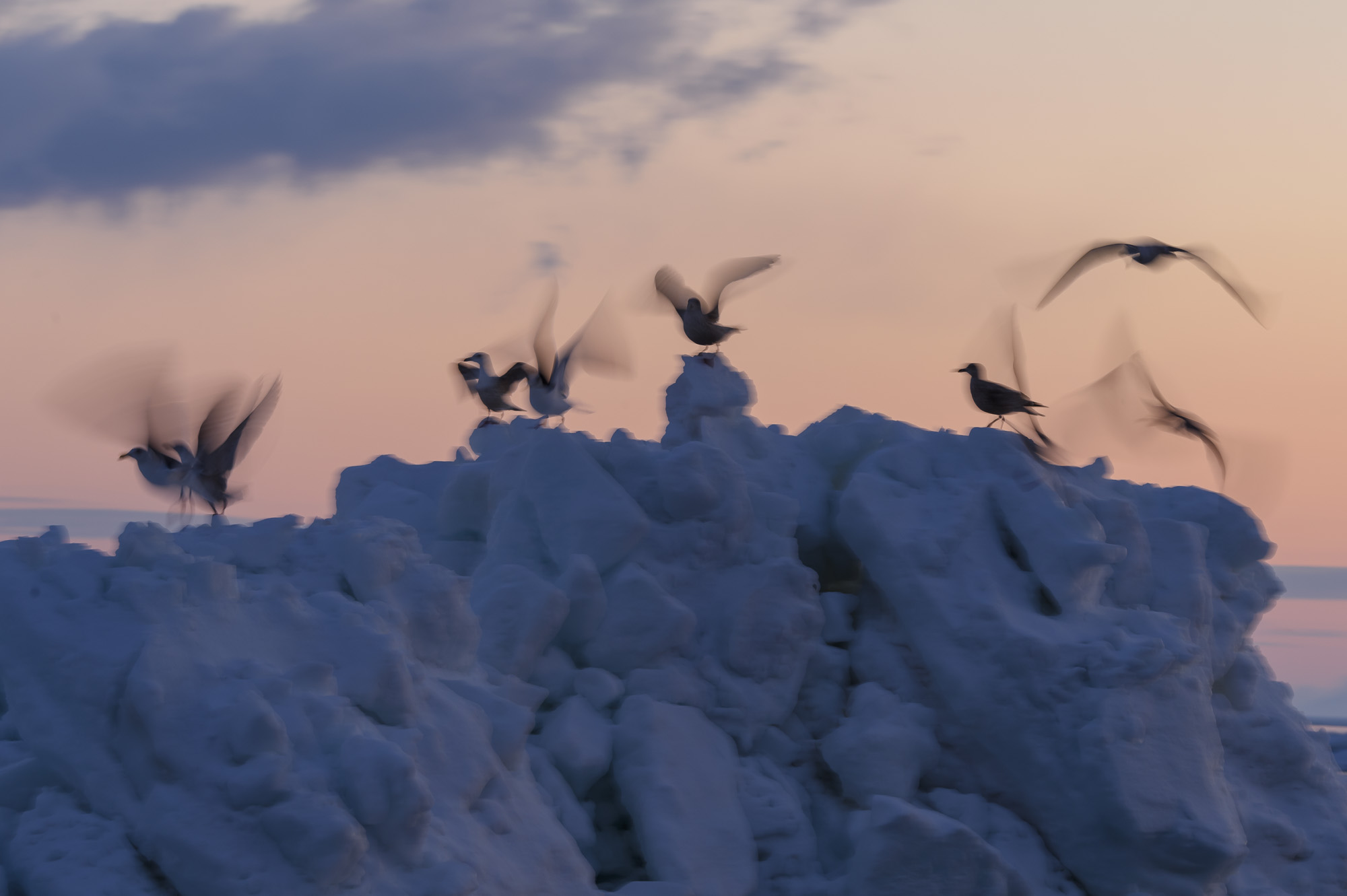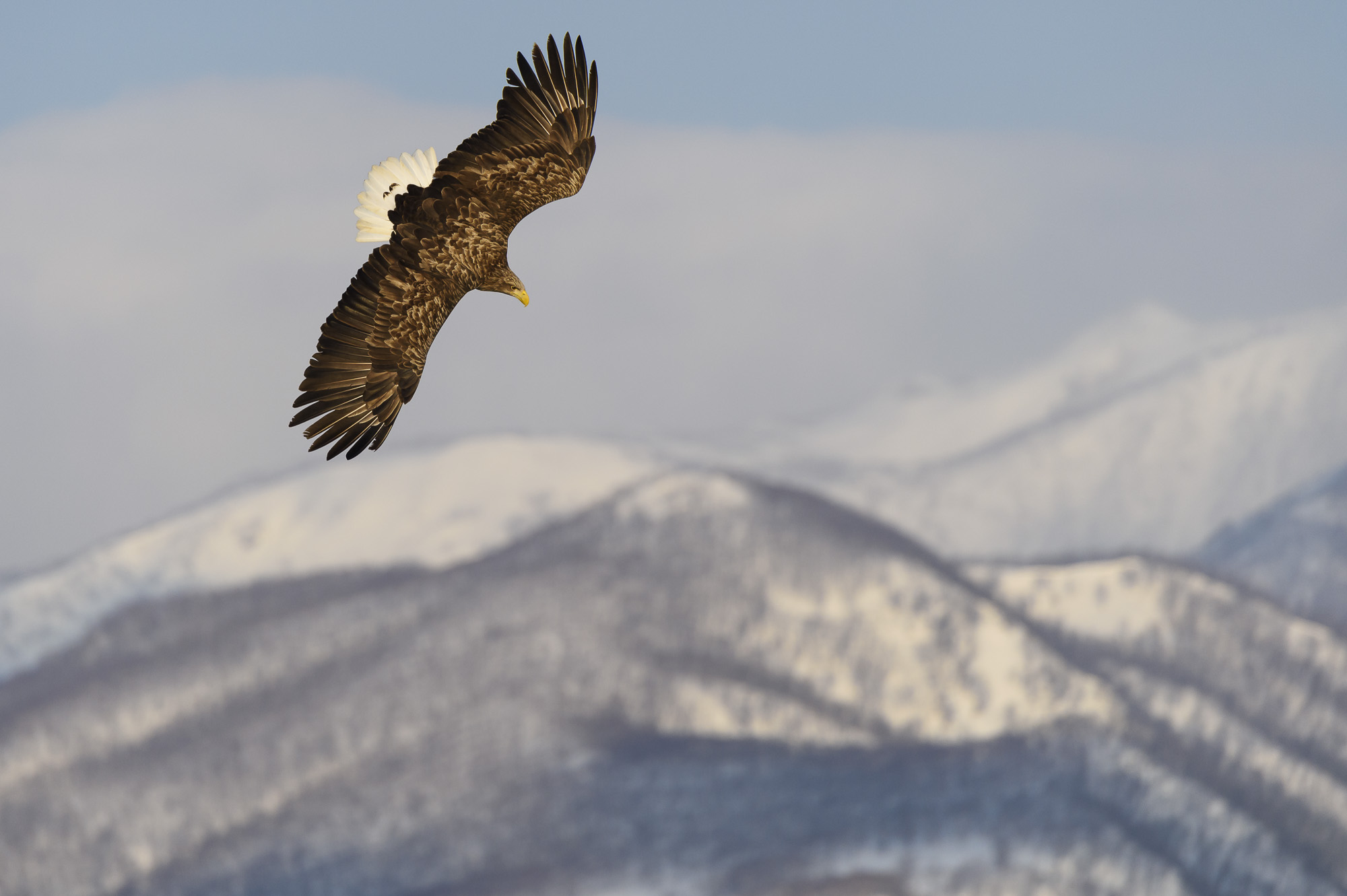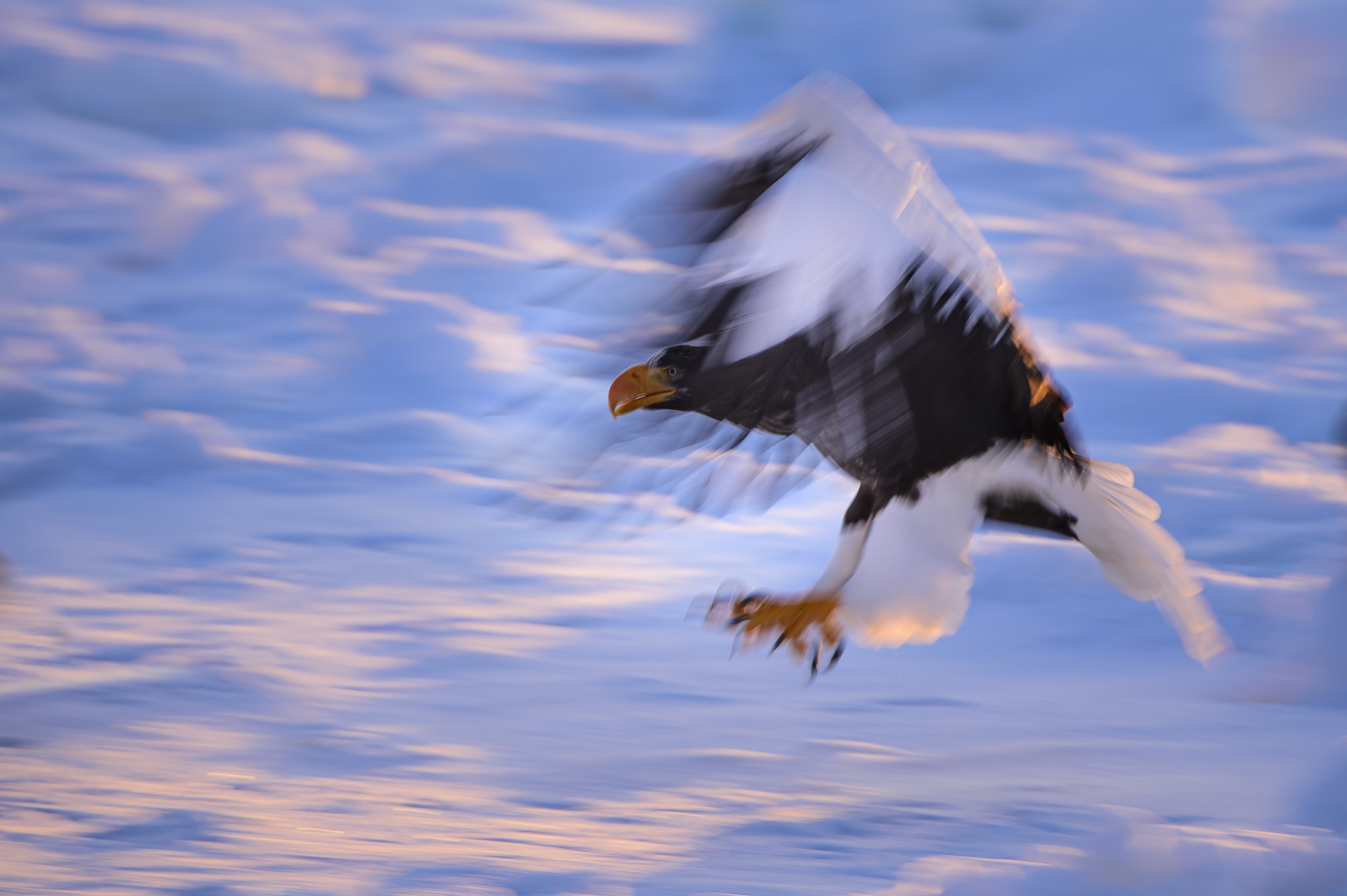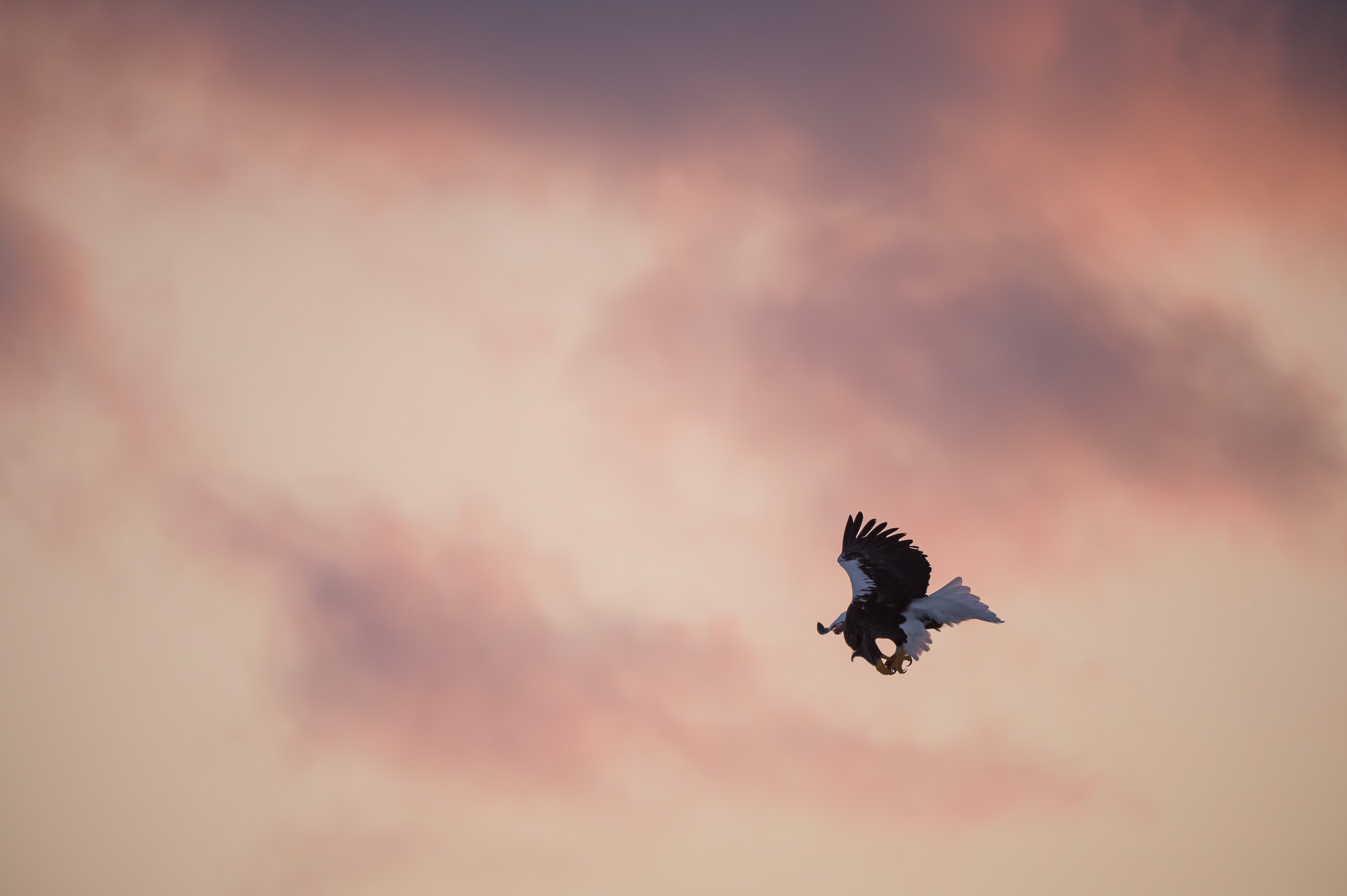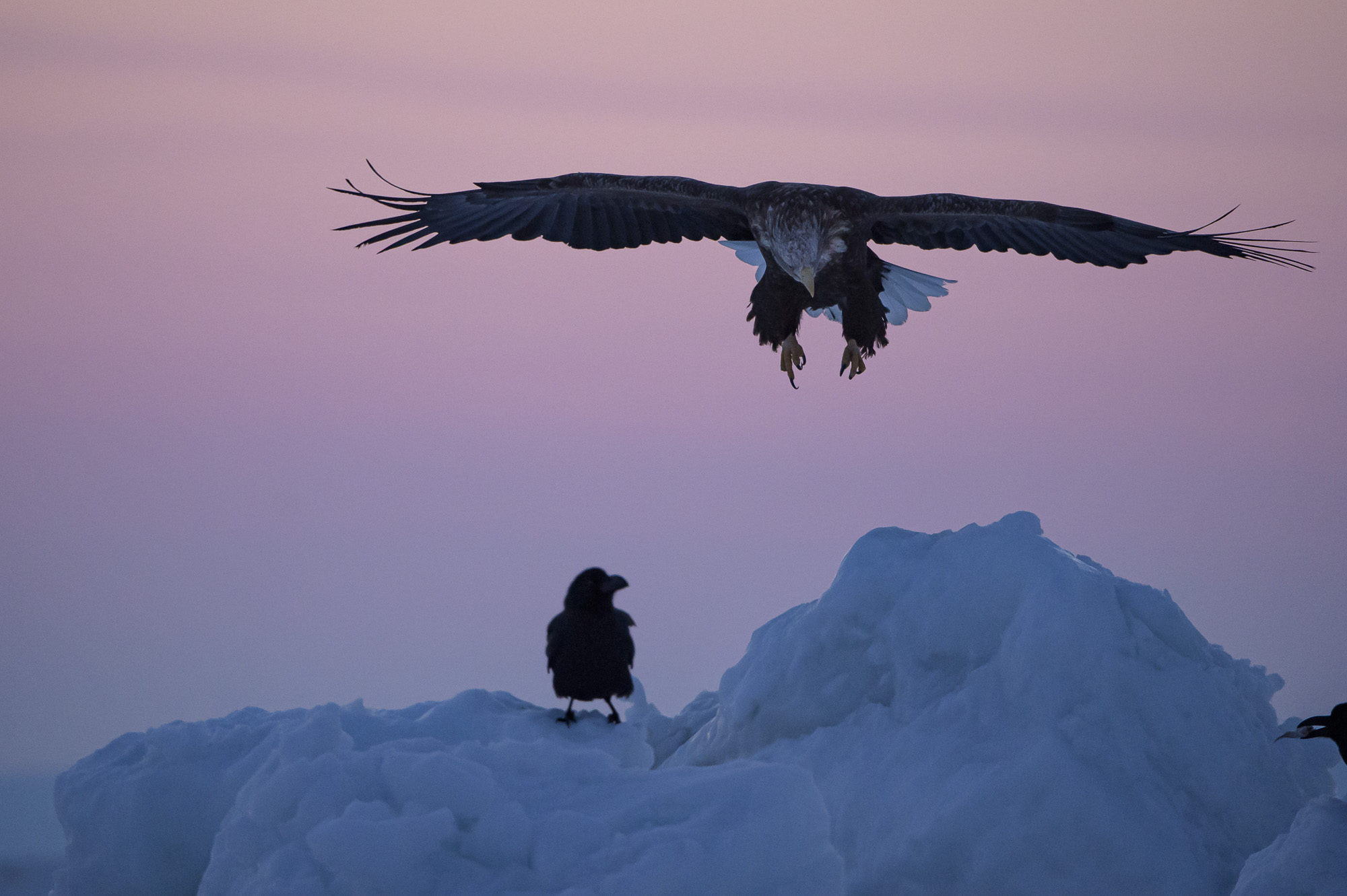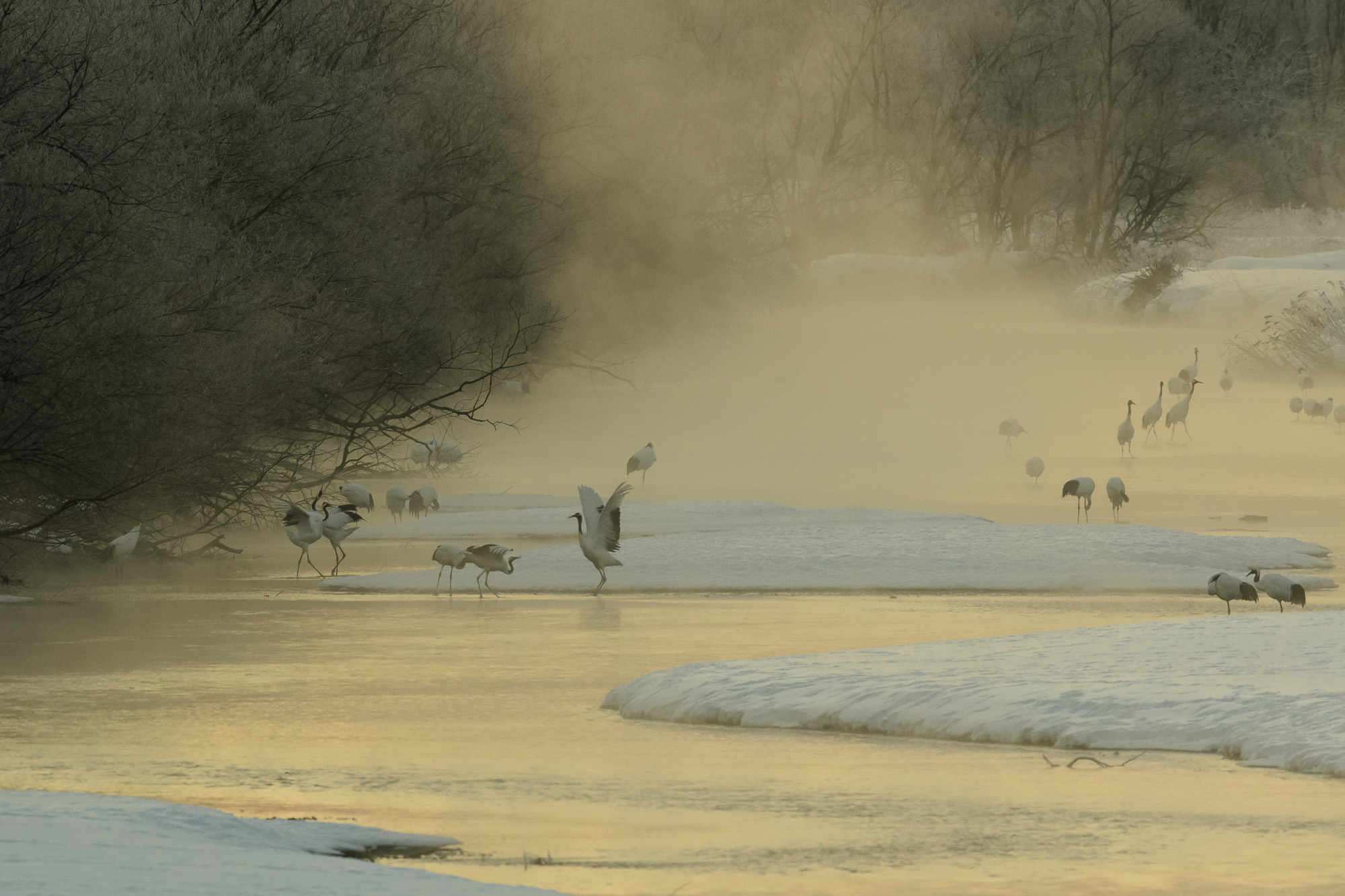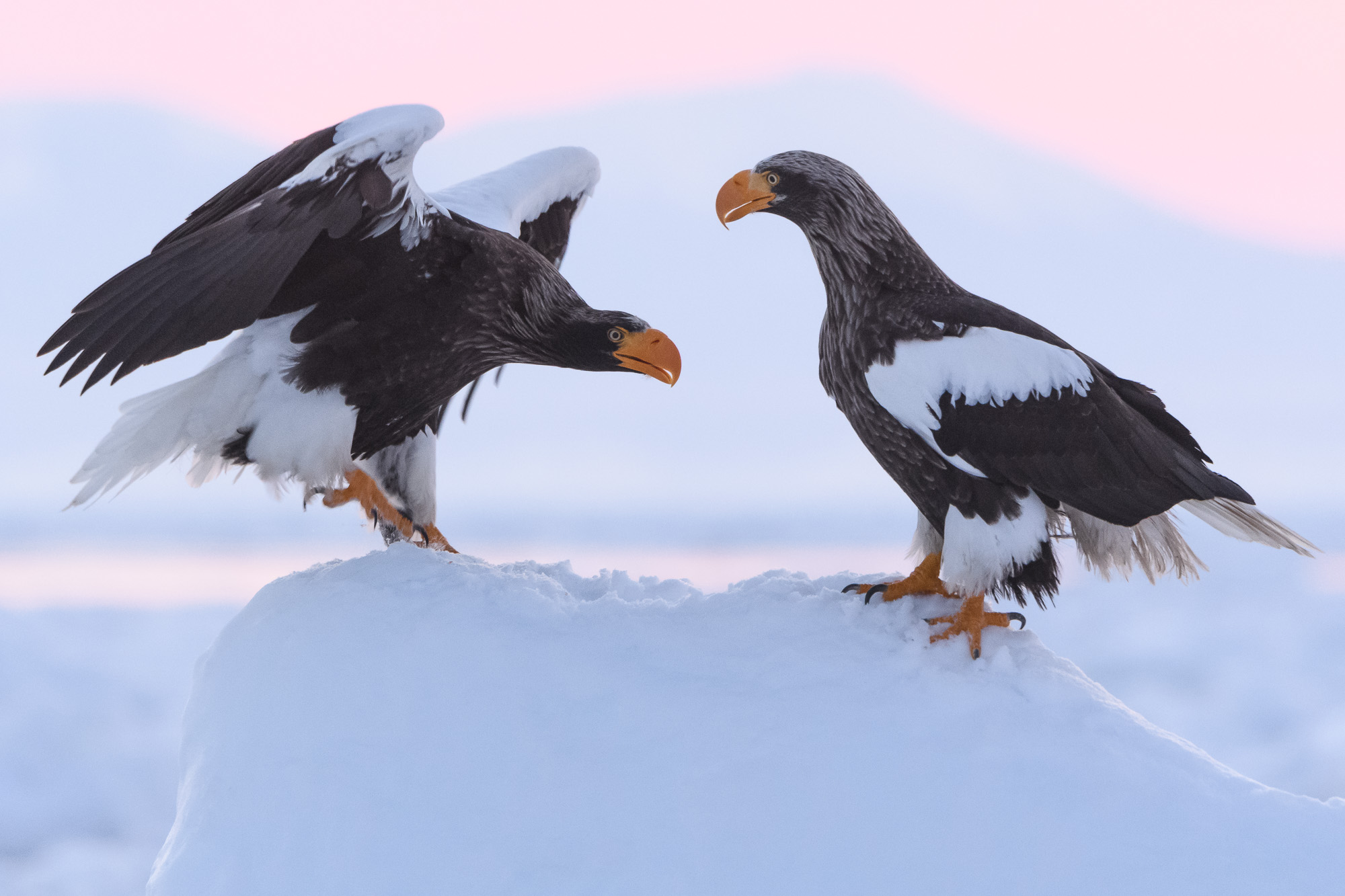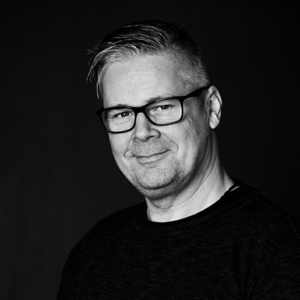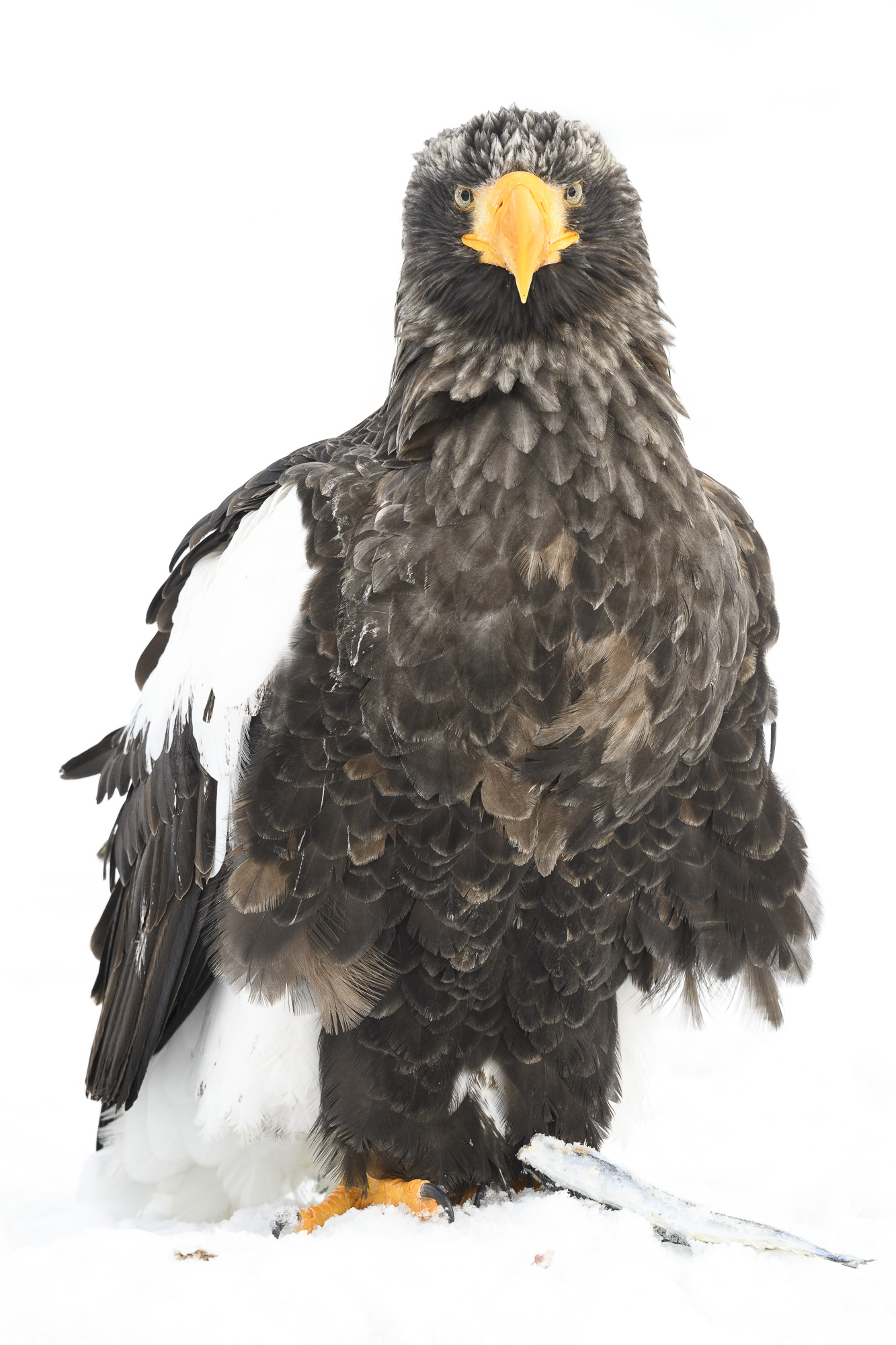Some highlights
- Three boat trips to the pack ice of the Sea of Ochotsk and close encounters with Steller’s Sea Eagle and White-Tailed Sea Eagles
- Red-Crowned Cranes dancing on the snow-covered landscape
- The largest Owl in the World – Blakiston’s Fish-Owl
- Hundreds of Whooper Swans spending the winter in volcanically-heated holes in the ice
- Sika deer and foxes in a winter landscape
- Volcanic landscapes
- Dramatic winter scenery
- Traditional Japanese lodging, with hot-spring baths
- Fantastic Japanese food
- The tour guide will show you all the best spots, and give photographic advice, in a small group
- We promote conservation by economically supporting The Wild Bird Society of Japan
Visiting Japan in the winter time is a natural experience that lacks comparison. Japan provides us with a snow-covered mountain landscape that not only gives us amazing opportunities for landscape photography, but also a beautiful background when we photograph animals and birds. We will have unique encounters with Japanese Macaques, Steller’s Sea Eagle, Blakiston’s Fish-Owl, as well as the national bird of Japan, the Red-Crowned Crane. We will often get very close to the animals and be able to get spectacular pictures.
Japan also offers a fantastic cultural experience. Abundant Shinto temples show that religion is practiced all over the area. We will also visit traditional Japanese guesthouses, so-called ryokans. Our accommodation will often have traditional onsen baths, filled with water from hot springs. Japanese food is of very high standard, and we will be served traditional food during the tour.
STELLER´S SEAEAGLE ON THE PACK ICE
The harbor town of Rausu will be our base for three days. Our main objective is to get out into the pack ice to meet the Steller’s Sea Eagle. During winter, a large part of the population that nests on the Kamchatka Peninsular can be found on the pack ice of the Sea of Ochotsk. In February, the pack ice is mostly north of Rausu, and provides great opportunity to experience hundreds of eagles, both Steller’s Sea Eagle and the ”ordinary” White-Tailed Sea Eagle. We will spend three mornings exploring the pack ice by boat to photograph the eagles. As the birds are fed with fish, we will often be within a few meters from them, and they are quite unafraid.
Our afternoons will be spent doing landscape photography in and around Shiretoko National Park. We will head out on to the Notsuke Peninsular where the landscape is covered with masses of pack ice and snow, here we normally find Sika deers and Red foxes.
WORLDS LARGEST OWL
During our stay in Rausu we will also visit a place where we hope to photograph the Worlds largest Owl, Blakiston’s Fish Owl. A ”pool” is kept open in a stream, and the owl is fed with fish every evening. Seeing the Owl approach the pool and dive for fish is a magical experience.
Itinerary
Travel day (11/2)
Flight to Kushiro airport.
Arrival at Kushiro Airport. Transfer to hotel.
We spend the whole day photographing Red-Crowned Cranes. For the morning session we choose the best sites according to weather. We will spend some of the day at the different feeding stations for cranes. There, you can photograph Whooper Swans, White-Tailed Sea Eagles, Sika Deer and Fox.
Just like the previous day we photograph Cranes in the morning. After an early lunch we head for Lake Kussharo, stopping on the way to photograph landscapes when there is an opportunity. Depending on when we arrive at Lake Kussharo there will be a chance to photograph Whooper Swans.
Day 4 (15/2) (Breakfast – Dinner)
We spend the day by and around Lake Kussharo, photographing Whoopr Swans at different sites. If weather and road conditions permit we will go to the Bihoro Pass in the morning for some landscape photography.
Day 5 (16/2) (Breakfast – Dinner)
Depending on weather and the results of the previous day’s photography we might head for the Bihoro Pass in the morning. The rest of the morning is spent at Lake Kussharo photographing Whooper Swans. After lunch we head for Rausu. On the way, we stop at louzan, Sulphur Mountain. The area is volcanically active and there is a chance to photograph sulphur springs and other volcanically active things.
Day 6-8 (17-19/2) (Breakfast – Dinner)
The day starts with a boat trip on the Sea of Ochotsk to photograph both Steller’s Sea Eagle and ”ordinary” Sea Eagles. Afternoons will be spent photographing landscapes at Shiretoko National Park. During two of the evenings we will visit a site where we can photograph the world’s largest owl, Blakiston’s Fish-Owl.
The days begin with boat trips out into the drift ice in the Sea of Ochotsk to photograph Steller’s Sea Eagle and ”ordinary” Sea Eagles. Here, there are incredibly good conditions for photographing these birds of prey. In the afternoons we will look for photogenic birds in the surrounding ports and go to the Notsuke Penisula to look for Sika deer and foxes. On the evenings of 17 and 18 February, we visit a place where we hope to photograph the world’s largest owl, Blakiston’s fish owl. On February 19, we leave Rausu during the day and slowly make our way back towards Kushiro and our hotel.
We spend the morning photographing Red-Crowned Cranes, choosing sites depending on weather. In the afternoon we fly to Tokyo Haneda airport and then home, if you haven’t chosen to join our extension tour.
Error: Contact form not found.


